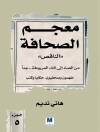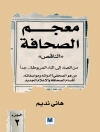This handbook critically analyzes cross‐border news production and “transnational journalism cultures” in the evolving field of cross-border journalism. As the era of the internet has
further expanded the border‐transcending production, dissemination and
reception of news, and with transnational co‐operations like the European Broadcasting Union and BBC World News demonstrating different kinds of cross‐border journalism, the handbook considers the field with a range of international contributions. It explores cross-border journalism from conceptual and empirical angles and includes perspectives on the the systemic contexts of cross‐border journalism, its structures and routines, changes in production processes, and the shifting roles of actors in digital environments. It examines cross-border journalism across regions and concludes with discussions on the future of cross-border journalism, including the influence of automation, algorithmisation, virtual reality and AI.
قائمة المحتويات
1. Cross-border journalism research and practice—an introduction.- Section 1 Conceptualizing and analyzing cross-border journalism.- 2. Histories of the research on cross-border journalism.- 3. Explicating field-defining concepts: The global, the cosmopolitan, and the parochial.- 4. Attempts on conceptualizing cross-border journalism.- 5. Cross-border journalism and de-Westernization.- 6. Managing diversity: Obstacles and challenges in cross-border journalism research.- Section 2 Actors and production of cross-border journalism.-7. State of research: Actors, organizations, structures, routines.- 8. How journalism practitioners develop cross-border collaborative journalism.- 9. Foreign correspondence and cross-border journalism.- 10. Political and legal frameworks of cross-border journalism.- 11. Global journalism as a challenge to the epistemology of “balance” and “objectivity” in liberal media ethics.- Section 3 Contentof cross-border journalism.- 12. Cross-border journalism content: Status quo and perspectives.- 13. Topics in cross-border journalism.-14. Producing cross-border journalistic content.-15. Climate reporting: Crossing the borders toward a global outlook.- 16. Cross-border journalism and public diplomacy.-17. Parameters favoring the production of news content beyond the state’s limits.- Section 4 Audiences of cross-border journalism.-18. Characteristics of cross-border journalism recipients.-19. On the (im)possibility of cross-border audience formation.- 20. Cross-border journalism and protest.- 21 Cross-border journalism and diaspora.- 22 Audiences and ethics in times of crises.- Section 5 Cross-border journalism across the world.- 23 Cross-border journalism in Sub-Saharan Africa.- 24 Cross-border journalism in North America.- 25 Cross-border journalism in South America.- 26. Cross-border journalism in the Arab World.- 27.Cross-border journalism in Greater China.- 28. Cross-border journalism in South Asia.- 29. Cross-border journalism in Southeast Asia.- 30. Cross-border journalism between South Korea and Japan.- 31. Cross-border journalism in Australia and Oceania.- 32. Cross-border journalism in Eastern Europe and Russia.- 33. Cross-border journalism in Europe.- 35. Virtual reality in cross-border journalism.- 36. The economy of cross-border journalism.- 37. Cross-border journalism education.- 38. Towards cross-border journalisms of the margins.
عن المؤلف
Martin Löffelholz is head of the International Crisis Communication Research Group at Technische Universität Ilmenau, Germany. He has held several guest professorships in non‐Western countries, including the Universitas Atma Jaya Yogyakarta in Indonesia and the Ateneo de Manila University in the Philippines. From 2012 to 2015, he was President of the Swiss German University in Jakarta, Indonesia. In his more than 300 scientific publications, including 18 books, Prof. Löffelholz deals with journalism, war and crisis communication, political communication, organizational communication as well as intercultural and international aspects.
Liane Rothenberger is a professor of media and the public with a specialization in migration at the School of Journalism, Catholic University of Eichstätt-Ingolstadt. She has published her work in journals such as Communication Theory and the International Journal of Communication. Her stays abroad have taken her to the Cardiff School of Journalism, Media and Culture (JOMEC), Université de Haute‐Alsace in Mulhouse, Université Lumière 2 in Lyon, and the Centre for Global Studies at the University of Victoria in Canada.
David H. Weaver was on the faculty of the School of Journalism at Indiana University from 1974 to 2011, teaching mainly research methods and political communication to graduate students. He has published 14 books and more than 100 articles on journalists, journalism, and the agenda-setting role of news in politics and public affairs. He has been a visiting professor at the City University of Hong Kong, the National Chengchi University in Taiwan, the University of North Carolina at Chapel Hill, LM University in Munich, Germany, and the University of Navarra in Pamplona, Spain.












